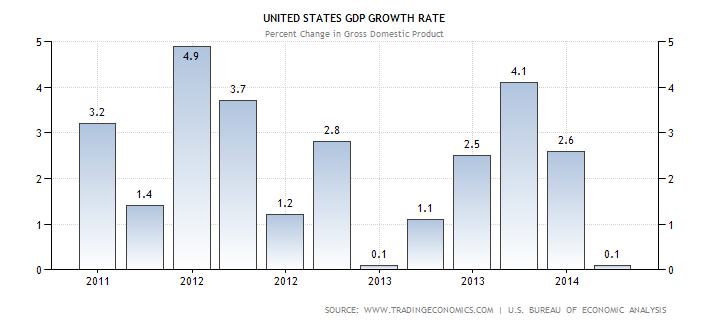There Is More To REITs Than Just Housing
Post on: 26 Июль, 2015 No Comment

18.08%
Data Source. ETF Database as of July 7, 2014. Past performance is not an indication of future results.
Currently the SPDR S&P 500 ETF Trust (SPY), which tracks the S&P 500 index has a total return of 7.93% YTD as of July 7, 2014 according to Bloomberg. I would contend that at least a part of this 2014 YTD outperformance by REITs can be attributed to record low interest rates in addition to positive reports with respect to the housing and economic recoveries taking place in the U.S.
(Photo credit: 401(K) 2013)
Despite the recent momentum in REITs, many are cautious on additional investments in REITs due to fears over the impact of rising interest rates on the housing market and mortgage REITs in particular. To this end, it is important to recognize that REITs are not just related to the housing market and all REITs are not mortgage REITs. In fact, the largest component of the REITs market is not associated with mortgage REITs, but rather is associated with retail REITs.
To help better understand the diverse, and often misunderstood, REIT marketplace, I provide a breakdown below of the different sub-industries of the REIT industry, which falls under the financials sector. According to the Global Industry Classification Standard (GICS), as published by MSCI, there are nine sub-industries of REITs as follows:
- Diversified REITs – companies or trusts with significantly diversified operations across two or more property types.
- Industrial REITs – companies or trusts engaged in the acquisition, development, ownership, leasing, management and operation of industrial properties. Includes companies operating industrial warehouses and distribution properties.
- Mortgage REITs — companies or trusts that service, originate, purchase and/or securitize residential and/or commercial mortgage loans. Includes trusts that invest in mortgage-backed securities and other mortgage related assets.
- Hotel & Resort REITs – companies or trusts engaged in the acquisition, development, ownership, leasing, management and operation of hotel and resort properties.
- Office REITs – companies or trusts engaged in the acquisition, development, ownership, leasing, management and operation of office properties.
- Health Care REITs – companies or trusts engaged in the acquisition, development, ownership, leasing, management and operation of properties serving the health care industry, including hospitals, nursing homes, and assisted living properties.
- Residential REITs – companies or trusts engaged in the acquisition, development, ownership, leasing, management and operation of residential properties including multifamily homes, apartments, manufactured homes and student housing properties.
- Retail REITs – companies or trusts engaged in the acquisition, development, ownership, leasing, management and operation of shopping malls, outlet malls, and neighborhood/community shopping centers.
- Specialized REITs – companies or trusts engaged in the acquisition, development, ownership, leasing, management and operation of properties not classified elsewhere. Includes trusts that operate and invest in storage properties. It also includes REITs that do not generate a majority of their revenues and income from real estate rental and leasing operations.
While mortgage REITs tend to get the most attention due to their propensity to pay high relative yields, they do not represent the only way to invest in the REIT marketplace. They may also be the one sub-industry that experiences the most stress when the Federal Reserve does begin tightening through gradual increases of the Federal Funds Target Rate.
From my reasoned rationale perspective, the other REIT sub-industries appear to be positioned well to perform in a rising rate environment for the next few years under the presumption that the Fed would not consider raising interest rates unless they believed that the U.S. economy was on a firm footing and expanding moderately well.
- As the economy expands, companies generally sell more goods and employ more people. As companies grow, they need to take on more space, which would benefit office REITs and certain industrial REITs .
- As the economy expands and more Americans are working and increasing their personal levels of disposable income, individuals will tend to spend more in retail shopping outlets and travel more which would benefit retail REITs as well as hotel & resort REITs .
- As the economy expands and more Americans are working and earning reasonable wages, individuals will consider alternative housing means including both homes and apartments, which would benefit residential REITs. Some of this housing related activity may be curtailed by an increasing cost of credit associated with rising interest/mortgage rates which might hurt single family home purchasing activity while potentially helping apartment rentals.
- Aside from a slowly improving U.S. economy, health care REITs should stand to benefit in general from an aging population in the U.S. and the retirement from the workforce of the baby boomers generation. The demand from these individuals for assisted living and nursing home facilities will likely outpace the current supply of available properties.
- As a country that tends to save everything, some might refer to the U.S. as “a society of hoarders”, self-storage REITs, which fall under the specialized REITs sub-industry, seem to be poised to benefit from the downsizing of the baby boomer generation from larger single family homes to smaller apartments, assisted living facilities or nursing homes.
From a historical perspective, REITs have demonstrated that they have performed well in environments when the Fed has gradually raised interest rates. For example, during 2004-2006, the Fed raised the Federal Funds Target Rate on 17 different occasions in 25 basis point (0.25%) increments, and U.S. publicly traded REITs, as measured by the Wilshire REIT Index, experienced an average annual total return of 27.7%.














